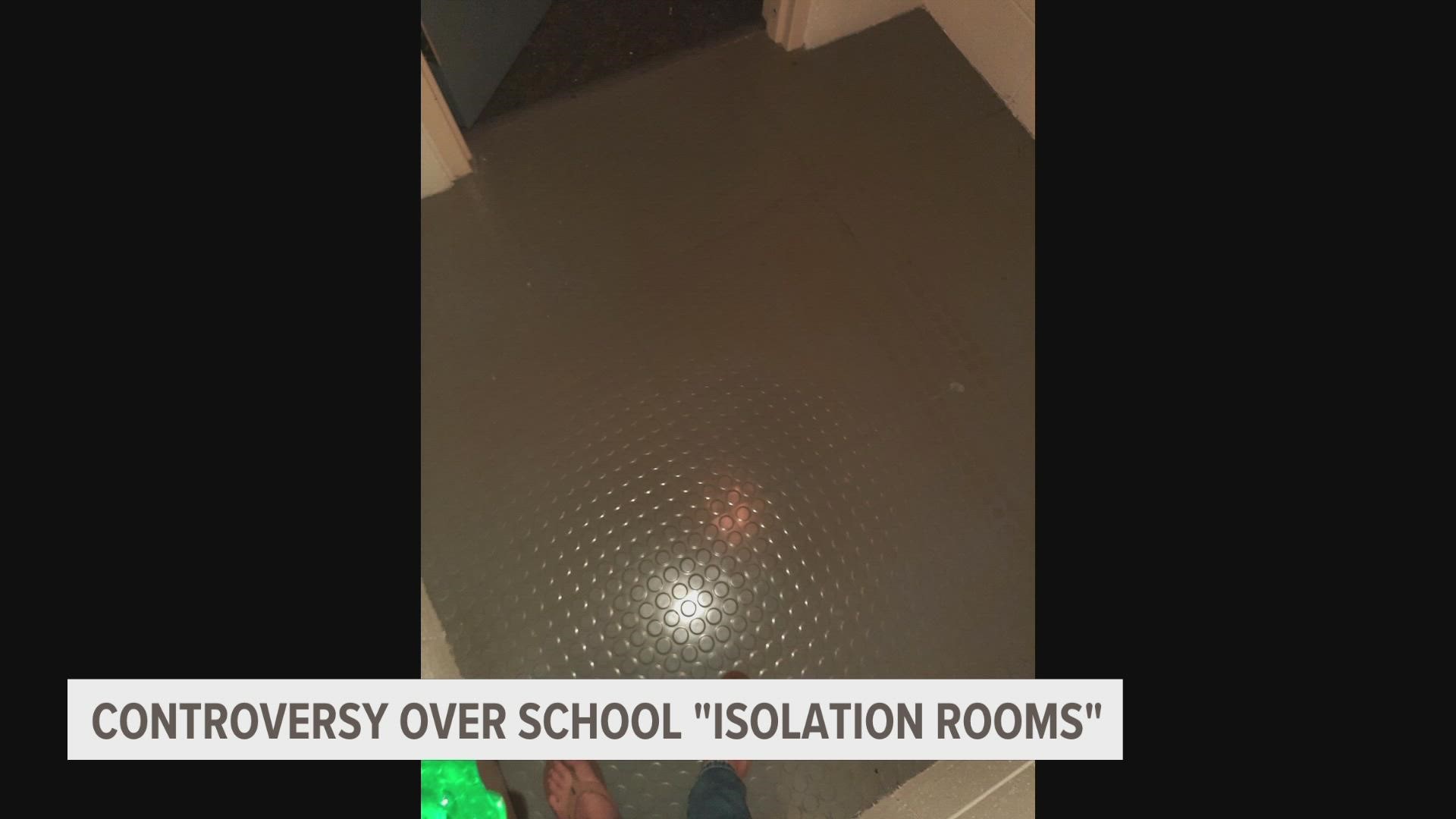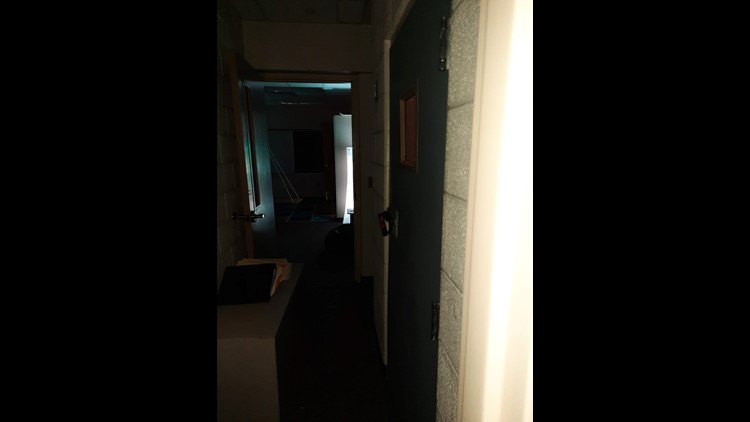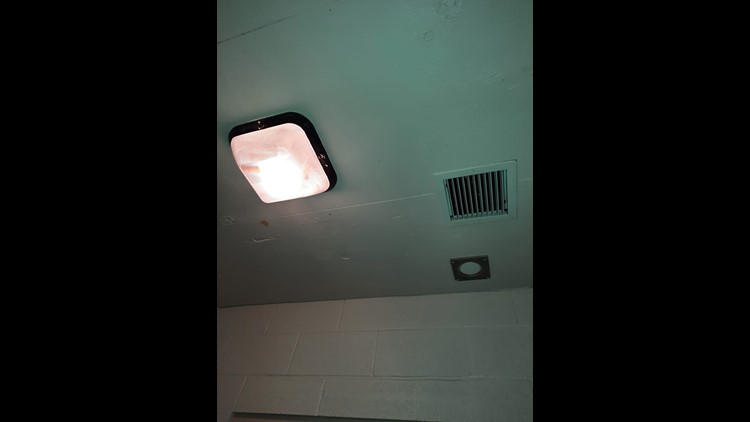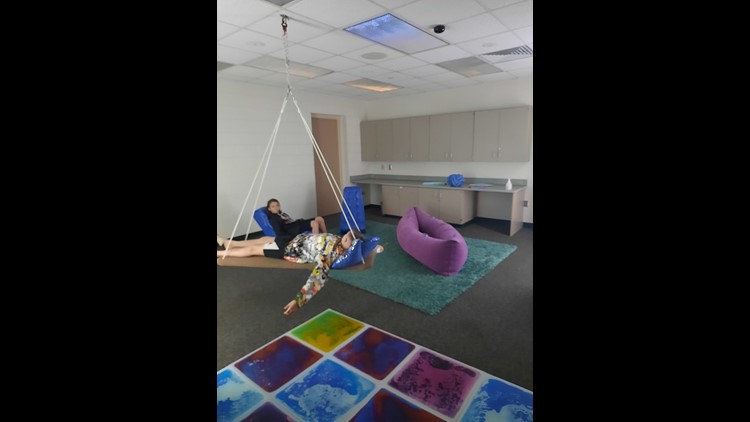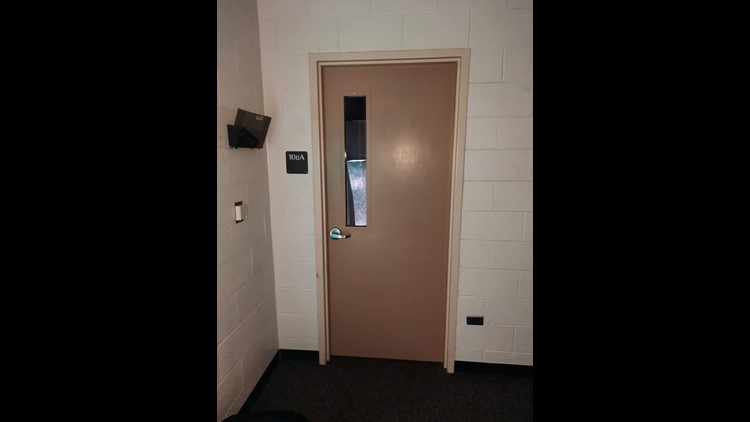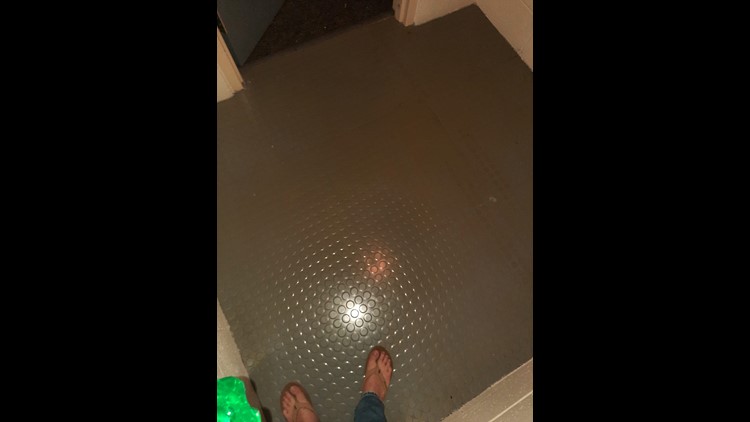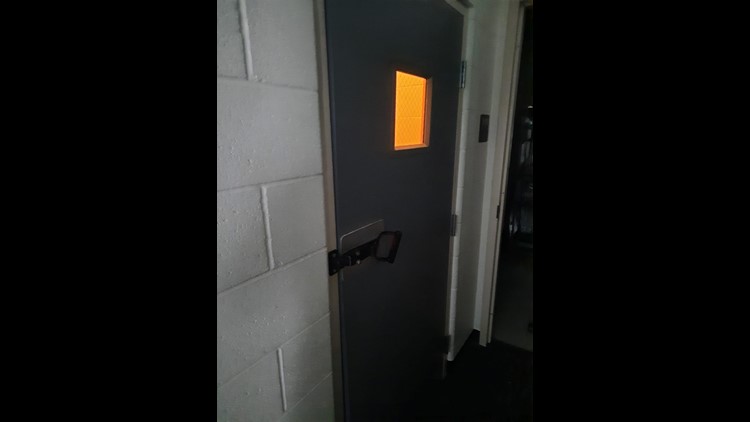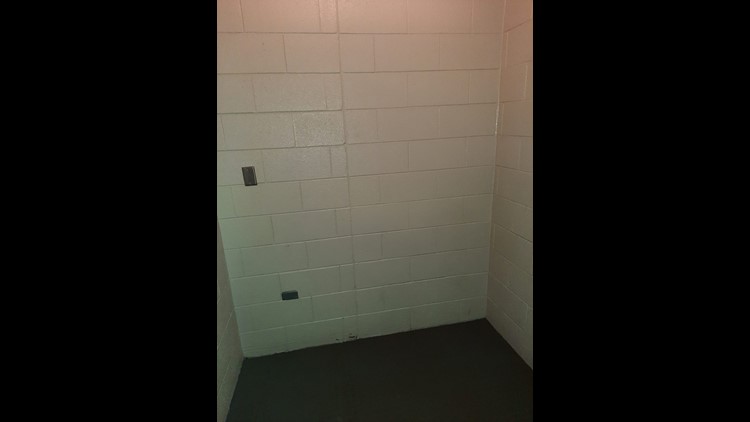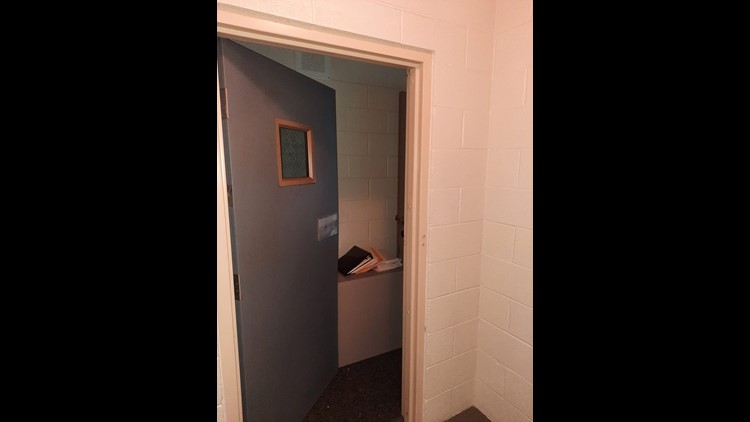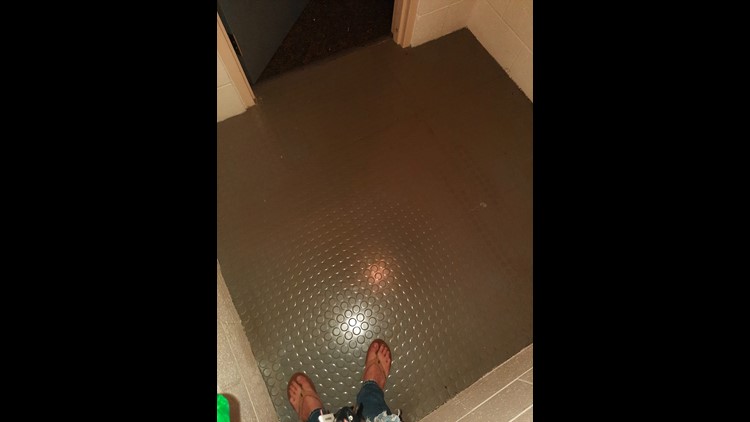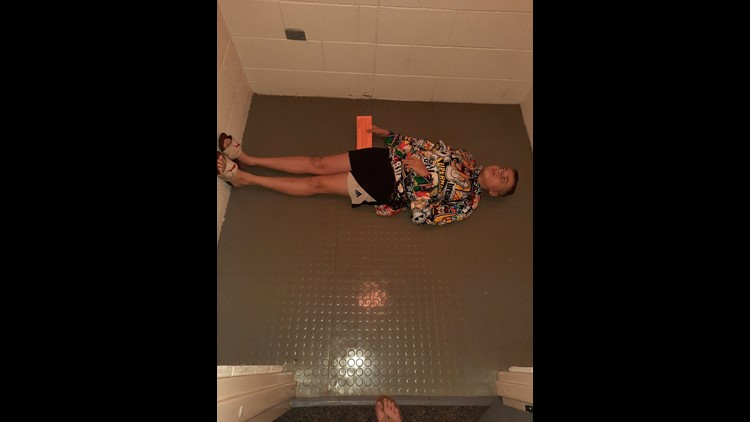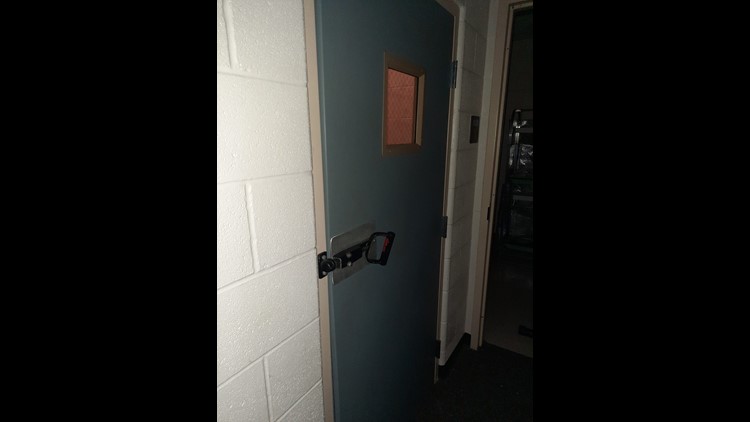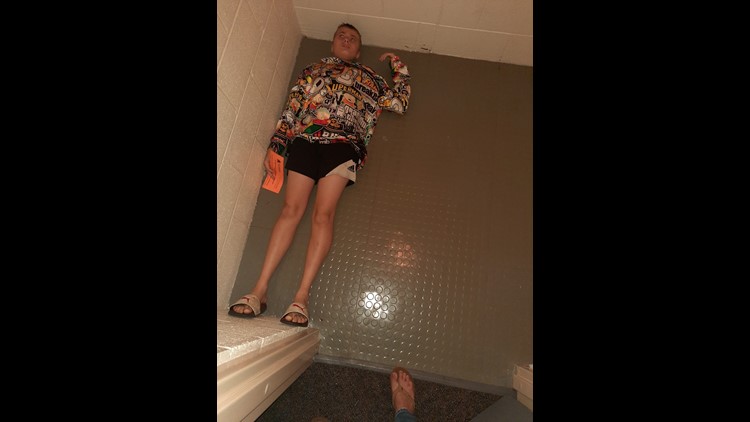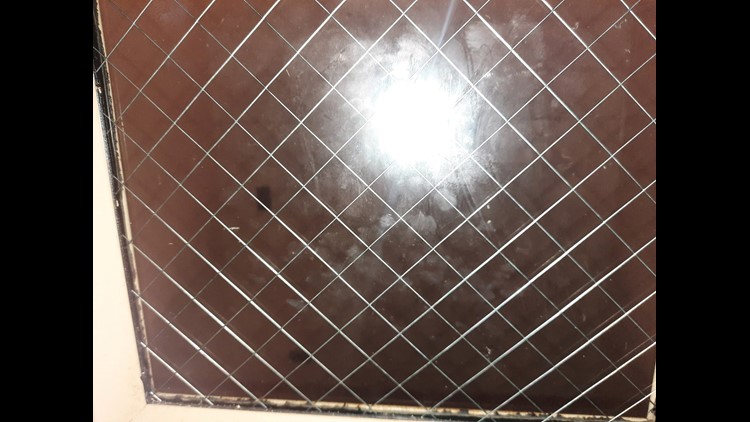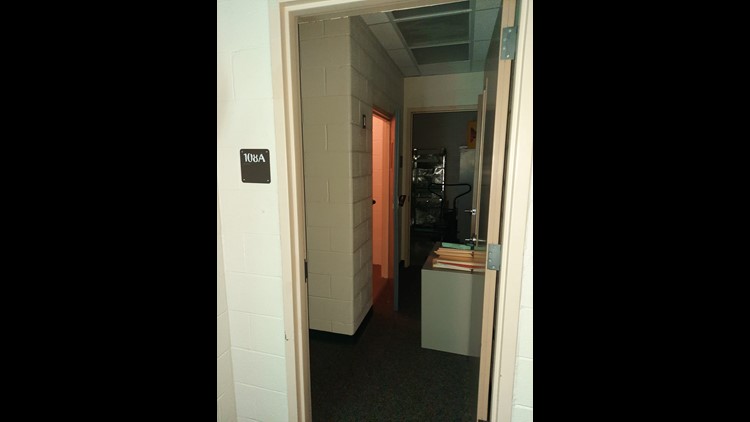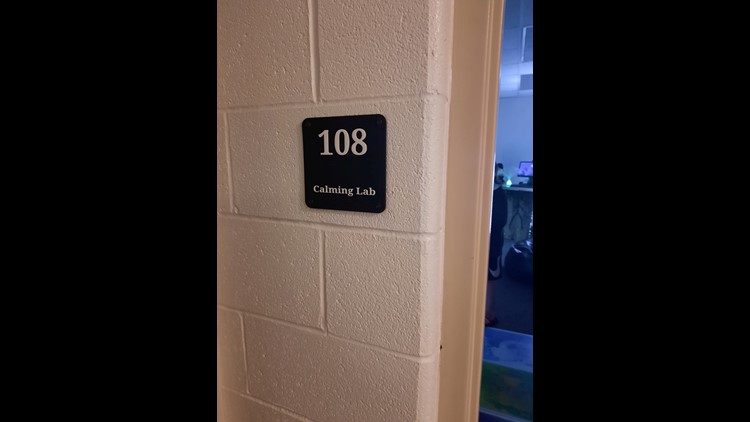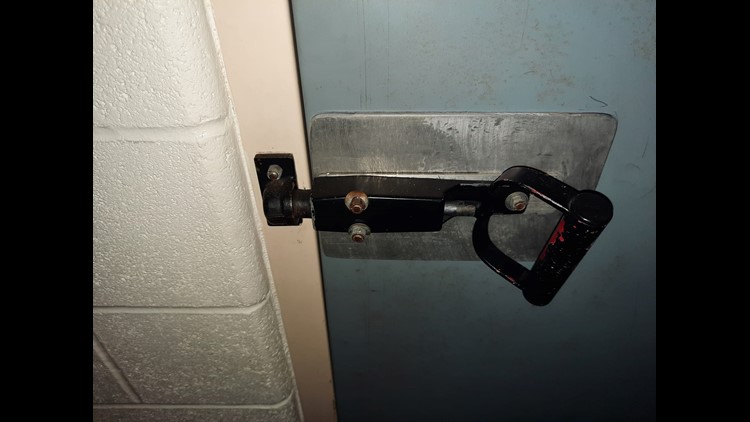ALLEGAN, Mich. — Photos posted online of a room inside an Allegan County School are now the center of controversy as some are questioning its use.
A 13 ON YOUR SIDE investigation revealed some inconsistencies between the law and the school's handling of certain situations where they end up turning to the room.
At Allegan Public Schools, these rooms are referred to as "isolation," "seclusion" or "chill" rooms. By law, they are only meant to be used for emergency situations. One of those situations could be if a child is posing a threat to themselves or others.
But one mother said her 8-year-old autistic son was held inside on several occasions for long periods of time, even against the advisement of the child's doctor.
"It looks like a prison cell," said Chelsea Zoll, whose kids go to Allegan Public Schools.
Zoll took pictures of a small room in the back of a classroom labeled the "Calming Lab" at L. E. White Middle School when she toured the building with her sons before the start of the year. It was something she said she had permission to do from staff inside the building at the time.
"When I pulled the handle and opened the door, I realized it was a seclusion room," she said. "There was no padding on the walls, and it was just a blank rubber floor."
Zoll described seeing a light with a "cage-type thing" on the ceiling with the light switch located on the outside of the room.
"It was just this giant metal door with a tiny little window," she said.
Zoll said initially, she was curious when she came across this room, but was later shocked when she posted the pictures online and said she heard stories about the rooms being used for misbehaving students.
"It's the children with autism, the children with ADHD, and the children that just misbehave," she said. "And these rooms are being used as behavioral modification versus what they are intended for."
'Seclusion Room' at Allegan Middle School
One of the stories she learned was about a little boy with autism named Daniel Brink, who in 2019 was a student at the district's Dawson Elementary School. At the time, he was eight years old. His mother, Rose, said she was concerned when she saw Zoll's pictures from the middle school, as her son had had a terrible experience with a similar seclusion room at the elementary.
"The school told me they were equipped to handle Daniel and his autism diagnosis, and they ended up putting him in this room," she said. "Which we did not know about."
Brink said when they first toured the school, she was led to believe the seclusion room was also their sensory room, which is a larger classroom with toys and resources for children like Daniel.
It wasn't until one day she got a call from the school to "clean up" her son, which made her learn that not to be true.
"When I got there, Daniel was locked in a small room that was actually labeled as a maintenance closet," Brink said. "And he was covered in his own urine, playing in it."
"There's no airflow in there," she added. "There's no vents, no nothing."
In 2006, the Michigan Department of Education's State Board of Education adopted "Supporting Student Behavior: Standards for the Emergency Use of Seclusion and Restraint."
In December 2016, the State of Michigan adopted new laws restricting the use of seclusion and restraint in schools. The state said this new policy was more uniform and streamlined its objectives.
In that policy, the state describes 'emergency seclusion' as:
"...a last resort emergency safety intervention involving seclusion that is necessitated by an ongoing emergency situation and that provides an opportunity for the pupil to regain self-control while maintaining the safety of the pupil and others. To qualify as emergency seclusion, there must be continuous observation by school personnel of the pupil in seclusion, and the room or area used for confinement must comply with state and local fire and building codes; must not be locked; must not prevent the pupil from exiting the area if school personnel become incapacitated or leave that area; and must provide for adequate space, lighting, ventilation, viewing, and the safety and dignity of the pupil and others, in accordance with department guidelines."
"It's super bright, and the noise bounces off the walls because they're brick," said Rose Brink. "And all three of those things that make his autism worse because his sensory disorder is lights, sound and smell."
"So, of course, he was acting up more when he was in there," she added. "Why would you put him in a situation that's going to make his aggravation worse?"
Brink admitted that her son's disorder can cause him to act up and out of control sometimes, but she said she never believed that her son put anyone in imminent danger.
Once Brink found out about the seclusion room, she asked Daniel how often he was put in there. "All the time," he told her.
According to the state's policy, emergency seclusion, and in this case, the "chill" room are not to be used as punishment, a substitute for less restrictive alternatives, or for the convenience of school personnel.
Brink thought Daniel's teachers at Dawson Elementary were not following those protocols.
"They are not supposed to use it as a form of anything other than for imminent danger," Brink said. "So the time that I went to pick him up, and he was playing in his urine, how is he a danger to anybody when he's sitting there urinating on himself?"
Daniel's 'Review of Existing Evaluation Data (REED) and Evaluation Plan' revealed that Daniel was put into the isolation room 33 times within a 2 month period anywhere from 15 to 75 minutes at a time.
The state's law says emergency seclusion should not be used for more than 15 minutes for an elementary student. If that does happen, there are several protocols that must be followed, including additional support and documentation to explain the extension beyond the time limit.
Following her discovery of the school's "chill" room, Brink wrote a letter to the school describing that she did not consent to her son being put in there unless it was absolutely necessary.
Part of that letter read the following:
"Our decision is based on the law, and the adverse effects of this practice we are having with Daniel as well as the school. At home, Daniel who once loved going to school and talking about it, no longer wants to go to school, and does not like to talk about it, when he does, it consists of the 'Chill Room' only.
We believe that with Daniels disability of ASD and Sensory Issues, this form of discipline is counterproductive and will have long term adverse effects that could harm him both physically and emotionally."
Brink also said she got a note from Daniel's doctor saying it would be detrimental to him in the long run with prolong or regular use of that room.
"The very next day after we gave them that letter, he was in that room for two and a half hours," Brink said.
Allegan Public Schools are defending the room's existence, citing the Emergency Seclusion laws set by the Michigan Department of Education. The district said they adopted the state's emergency use of seclusion and restraint policy several years ago, as do most public district's in the state.
When asked for comment, the district's superintendent, James Antoine, said the following:
"The district cannot and will not disclose legally protected student information. The room in question has existed in the middle school for over twenty years and its use has not been necessary for many years. This is due to the highly trained middle school staff's ability to de-escalate situations before there is an ongoing emergency situation that would endanger students or staff. The room does, per state law and district/state policy, have an observation window as well as a spring loaded mechanism that prevents the door from being locked when unattended."
Antoine did not directly comment about the seclusion room at Dawson Elementary.
"At the end of the day, they don't know how to deal with autism, and they're not ready for autism," Brink said. "There's very little that is the same about any two people with autism, so what works for my son might not work for another person."
Maggie Moore, the Executive Director of the Hope Network Center for Autism, said that generally speaking, she's found that sometimes spaces like seclusion rooms can be helpful for certain students, but not for all.
"It's 100% individualized, and I think having a team approach where all parties are okay and signed off is important," Moore said. "And if we're finding that something is not the most effective space right away, we need to look at alternatives."
Moore explained that it is important to look at every person or child individually, and also having a team of professionals and family on board to make sure everyone is understanding what's best for that person.
"If a kid urinates, defecates, or vomits on themselves, that's a warning that they're in crisis," said Moore. "Those are clear signs that there is something going on that needs further attention."
"Those are situations where you should really be stopping and pausing what you're doing and seeing if there anything else you can do to help support that individual," she added. "From my perspective, I would avoid doing something that I know is aversive to an individual outrightedly, if I can."
Moore said that she does think there's a time and place for a quiet space or a calm-down space, but the situation isn't always black and white.
"I don't want to ever say no, never, because there is a time and a place where things might be appropriate, but the important piece is communication," she explained.
Moore said that using emergency seclusion as a protective measure is very different than using it as a punishment.
"And I think that you have to be careful with that and make sure all parties are in agreement," she said.
Daniel Brink is no longer enrolled in Allegan Public Schools, and Rose said he is now in a more specialized setting where he is successful, but she hopes that no other child has an experience like hers did.
A day after 13 ON YOUR SIDE inquired with the school district and the superintendent about the seclusion room and the pictures obtained, Chelsea Zoll was served with a no trespassing order from the school.
They claim that on the day she took the pictures inside the middle school, August 23rd, she "entered multiple closed doors (including a private office), took photographs, and posted them to social media with inaccurate and misleading information."
The letter states that Zoll is banned from all Allegan Public School properties until further notice, and is only allowed on property in her car during reasonable pick-up and drop-off times as determined by the administration.
For this story's investigation, 13 ON YOUR SIDE obtained documented evidence that was used to accurately verify the claims made by the included parties.
►Make it easy to keep up to date with more stories like this. Download the 13 ON YOUR SIDE app now.
Have a news tip? Email news@13onyourside.com, visit our Facebook page or Twitter. Subscribe to our YouTube channel.

